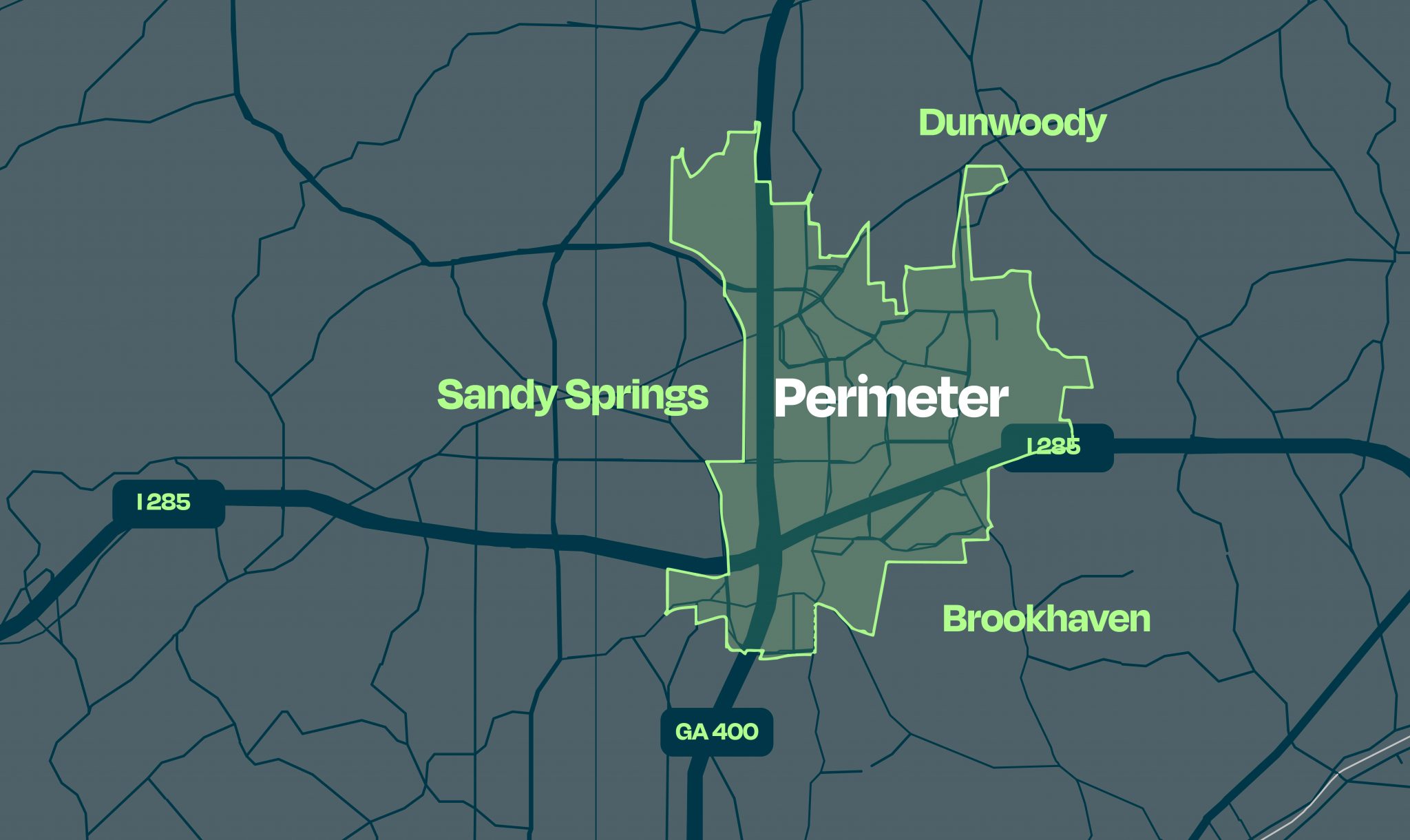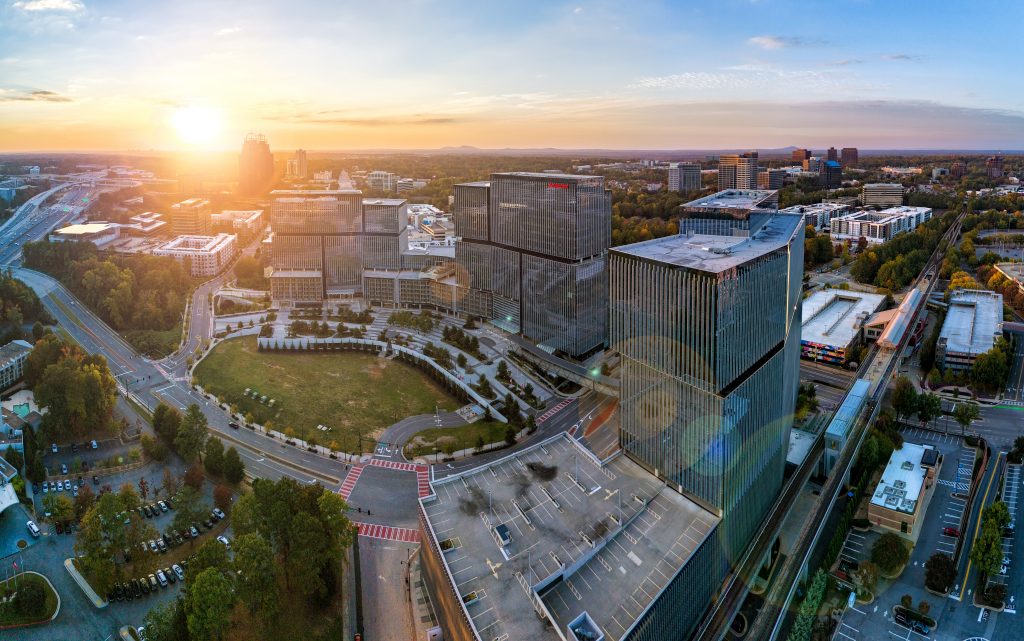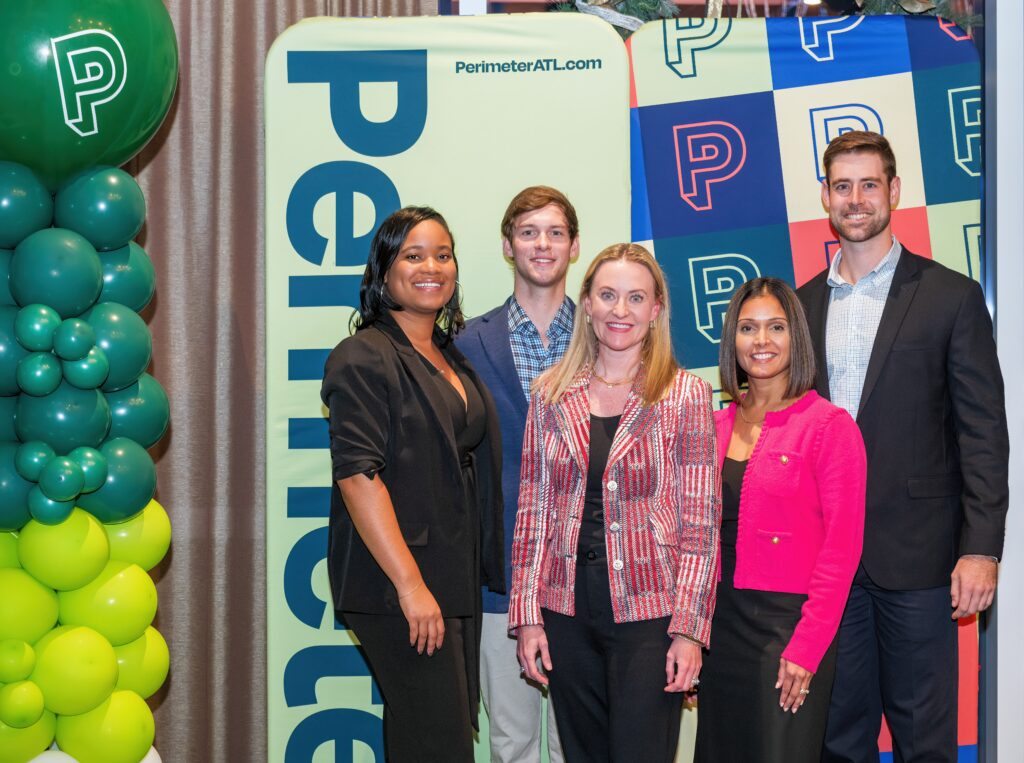
How we do things
around here
The Perimeter Community Improvement Districts (CIDs) is a self-taxing district that uses a small additional property tax on commercial space to accelerate needed transportation and infrastructure projects within the neighborhood.
For over two decades, the Perimeter CIDs have bridged government, development, and business communities to fuel one of the most influential business districts in Georgia, meaning progress happens with an intention that benefits the community and infrastructure tenfold.
(and counting) of improving the market
Invested into infrastructure, programs & projects
addition state & federal funding brought to district projects
district projects since the PCIDs was founded

Progress at the nexus of three vibrant cities and two major counties
A brief history
of Perimeter
Never a dull
moment for
Perimeter
Our Priorities
At the Perimeter CIDs, we collaborate closely with the cities of Brookhaven, Dunwoody, and Sandy Springs to enhance Perimeter's status as the South's premier livable center. Our key priorities include:

Access
Maintaining and enhancing access into and out of the district, covering both vehicular and mass transit options. This includes our ongoing efforts to improve roadway systems and expand public transportation choices.

Sense of Place
Creating district-wide value through enhancements, such as maintenance, landscaping, lighting, wayfinding, and other investments. Our goal is to make Perimeter an inviting destination, whether you're a guest, a visitor, or a part of our vibrant local community.

Mobility
Enhancing mobility for the district, one street at a time. Our comprehensive transportation infrastructure accommodates various modes of transportation, from transit vehicles to bicycles and pedestrians, making it easy to navigate from A to B. Plus, we're constantly exploring emerging technologies to ensure Perimeter's future remains cutting-edge for our community.

Transportation Solutions
Perimeter Connects, a Perimeter CIDs program, supports the vitality of the area by improving access and mobility through complimentary consulting services to employers and commercial properties. We take pride in our active collaborations with employers and properties, implementing innovative commute options programs that contribute to the betterment of our community in every way possible.

Perimeter Connects
Together, we can implement transportation solutions to improve access and mobility and reduce congestion every step of the way.

Board of Directors
The Perimeter CIDs are served by a board of directors representing commercial property owners from both Fulton and Dekalb counties. Each member has invested their time and effort into making Perimeter what it is today.

Perimeter CID’s Team
Meet our team, a group of talented individuals that ensures the Perimeter CIDs run like clockwork throughout the year.






